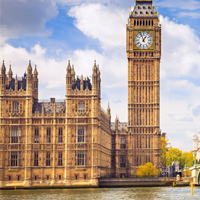Giải bài tập SBT Tiếng Anh lớp 11 chương trình mới Unit 9: Cities of the future
Giải bài tập SBT Tiếng Anh lớp 11 chương trình mới Unit 9
VnDoc.com xin giới thiệu đến các bạn Giải bài tập SBT Tiếng Anh lớp 11 chương trình mới Unit 9: Cities of the future do VnDoc.com sưu tầm và đăng tải dưới đây với nội dung giải chi tiết và dễ hiểu sẽ là nguồn tài liệu hữu ích giúp các bạn có bài học trọn vẹn kiến thức.
Giải bài tập SBT Tiếng Anh lớp 11 chương trình mới Unit 6: Global warming
Giải bài tập SBT Tiếng Anh lớp 11 chương trình mới Unit 7: Further education
Giải bài tập SBT Tiếng Anh lớp 11 chương trình mới Unit 8: Further education
Giải bài tập SBT Tiếng Anh lớp 11 chương trình mới Unit 10: Healthy lifestyle and longevity
Pronunciation - trang 27 Unit 9 Sách Bài Tập (SBT) Tiếng anh 11 mới
1. Decide whether the question tags in B's responses have rising or falling intonation. Mark (rising intonation) or (falling intonation) after the question tags.
Quyết định xem các câu hỏi đuôi trong câu trả lời của B có tăng hay giảm ngữ điệu. Đánh dấu (tăng ngữ điệu) hoặc (giảm ngữ điệu) sau các câu hỏi đuôi.
1. A: People living in the city are at a great risk of developing a lung disease.
B: Because the air is polluted, isn't it?
2. A: I've been living here for twenty years. I know every corner in this town.
B: So you know where to buy second-hand books, don't you? I'm looking for some.
3. A: I've invited Ann to a concert, but she can't make it. She has an English test tomorrow.
B: She has to do some revision tonight, doesn't she?
4. A: The nightlife in this city is so boring.
B: It isn't. I know a night market just round the corner. Let's try some local food there, shall we?
5. A: The government should look for ways to deal with the traffic problems here.
B: I agree. They shouldn't allow vending carts to move in the streets during the rush hour, should they?
Đáp án:

2. Practise the exchanges in 1 with a partner.
Luyện tập các trao đổi trong bài 1 với một người bạn.
Vocabulary & Grammar - trang 27 Unit 9 Sách Bài Tập (SBT) Tiếng anh 11 mới
1. Match a word in column A with a word or phrase in column B.
Nối một từ ở cột A với một từ hoặc cụm từ ở cột B
Đáp án:
1. e upgrade infrastructure
2. c quality of life
3. f treat wastewater
4. a detect traffic problems
5. d overcrowded streets
6. b city dwellers
2. Complete the following sentences with the phrases in 1.
Hoàn thành các câu sau với các cụm từ trong bài 1.
1. The government is making plans to install sensors and cameras in the city centre to _______and drivers to avoid traffic jams.
2. It's urgent to _______ the city's transport _______because almost all the roads get flooded after heavy rain.
3. We can improve the _______ of the inhabitants by reducing pollution.
4. _______can enjoy better health care than people living in the countryside, but they are usually busier and more stressed because of the city's fast pace of life.
5. They are building a new waste processing plant to _______before it is reused or discharged into rivers.
6. Be prepared for _______and shopping malls when you visit big cities like Hong Kong and Beijing
Đáp án:
1. detect traffic problems
2. upgrade... infrastructure
3. quality of life
4. City dwellers
5. treat wastewater
6. overcrowded streets
3. Complete the sentences with the correct question tags.
Hoàn thành các câu với câu hỏi đuôi chính xác
1. There aren't any shops or restaurants in this street, ________?
2. I think nobody likes to live in a polluted city, ________?
3. Let's start our discussion on global warming,________ ?
4. Something needs to be done immediately to solve the water shortage problem,________?
5. This is what we need for our new house, ________ ?
6. Stop playing this computer game and do your homework, ________ ?
7. You've never got stuck in a traffic jam, ________?
8. Everyone in our class will take part in the school's Green Campaign,________?
Đáp án:
1. are there 2. do they 3. shall we 4. doesn't it
5. isn't it 6. will/ would/ could/ won't you 7. have you 8. won't they
4. Answer the questions, using conditional sentences.
Trả lời các câu hỏi, sử dụng câu điều kiện
1. What do you usually do if you don't have to go to school?
2. What happens if you leave a fish out of water?
3. What happens if you heat water to 100 degrees Celsius?
4. What number do I need to dial if I'm involved in a traffic accident?
5. How much is a motorcyclist fined if he doesn't wear a helmet?
6. Where do you usually go if you have a long holiday?
7. Where can tourists go if they want to taste local food?
8. What time do you usually go to bed if you don't have too much homework to do in the evening?
Gợi ý đáp án:
1. If I don't have to go to school, I usually help my mother with the housework.
2. If i leave a fish out of water, it dies.
3. If I heat water to 100 degrees Celsius, it boils.
4. If you're involved in a traffic accident, you need to dial 115.
5. If he doesn't wear a helmet, he's fined up to 200,000 VND.
6. If I have a long holiday, I usually go to (Nha Trang).
7. If tourists want to taste local food, they can go to (the local market).
8. If I don't have too much homework to do in the evening, I usually go to bed at 10.
5. Some of the sentences are incorrect. Pick out the wrong ones and correct the mistakes.
Một số câu không chính xác. Chọn ra những lỗi sai và sửa lỗi.
1. Plants would die if they don't get enough water.
2. Everything's been prepared for the project, isn't it?
3. If you see a fire, call the fire department immediately.
4. Your brother never goes out with his friends if he hasn't finished his homework, has he?
5. I believe no one can solve the pollution problem, don't I?
6. There's been a new plan to treat wastewater in the city, hasn't there?
7. If you mixed red and green, you'd get yellow.
8. These are devices to detect any heating problems, aren't these?
Đáp án:
1. would die -> die
2. isn't it -> hasn't it
3. RIGHT
4. has he -> does he
5. don't I -> can they
6. RIGHT
7. mixed ... would get -> mix ... get
8. aren't these -> aren't they
Reading - trang 29 Unit 9 Sách Bài Tập (SBT) Tiếng anh 11 mới
1. Read the first part of the text about Barcelona and fill each gap with a word or a phrase from the box.
Đọc phần đầu của văn bản về Barcelona và điền vào mỗi khoảng trống bằng một từ hoặc cụm từ từ hộp.
plan population popular urban
inhabitants smart ambitious quality of life
Barcelona, the second largest city in Spain, is one of the most (1) ...................... tourist destinations in Europe. It is known for its sunshine, architecture, and lively streets. The City Council plans to transform Barcelona into a(2) .....................city, by having technology reachevery neighbourhood, balancing sustainable urban and economic development, and improving its inhabitants' (3) .....................
One of its great achievements is the transformation of the 200-hectare Poblenou industrial area into the 22@Barcelona District, also known as the Innovation District. This is considered the most important project of (4) ..................... transformation in Barcelona in recent years, and one of the most (5) ..................... in Europe, with more than 200 million Euros invested in the infrastructure (6) ..................... . The project was launched in 2000 and is still ongoing. As of December 2011, an estimated 4,500 new companies had moved to the district since 2000, an average of 545 per year. The (7) ..................... in 22@Barcelona has grown 22.8%, from 73,464 (8) .....................in 2001 to over 90,000
Đáp án:
1. popular 2. smart 3. quality of life 4. urban 5. ambitious
6. plan 7. population 8. inhabitants
2. Read the second part of the text and answer the questions.
Đọc phần thứ hai của văn bản và trả lời các câu hỏi.
Why is the 22@Barcelona District also called the Innovation District? Let's take a walking tour to find the answer to this question.
First, the digital bus stop, with its multifunctional features, is one of the prides of Barcelona. It not only displays real time bus schedules, but also offers tourist information, USB charging sockets and acts as a free WiFi station.
The City Council has also set a target for saving electricity. At night, the smart lighting system becomes less bright when there is no motion detected in the streets and lights up vvhen people are around. This helps to save money and reduces carbon dioxide emissions.
Next is the smart waste collection system with smart rubbish bins which are connected to a vacuum network under the streets. When the bins are full, the sensors installed on them send information to the collection plant, and the waste is sucked through underground pipes. This system reduces noise pollution made by refuse lorries and keeps public spaces clean and odourless.
To encourage city dwellers to use bicycles, a bicycle sharing system was developed. It is designed to h people to travel short distances without consuming any energy. People pay an annual fee, get a speci card, scan it at any of the 400 stations, check out a bike, then check it back in at the station closest to their destination. Most stations are located near other public transport stops or public car parks. What's more, with seven hours of sunshine a day, Barcelona has taken advantage of solar energy. All r large buildings such as offices, hotels, hospitals, gyms, or swimming pools use solar panels to produc< their own hot water. This helps to reduce fossil fuels consumption and carbon dioxide emissions.
For over a decade, the old industrial district of Poblenou in Barcelona has undergone a dramatic rene’ to create a high-quality environment for working and living. The aim of upgrading an old place while maintaining its economic activity has been achieved. That is why the 22@Barcelona model is being applied to other areas of the city.














